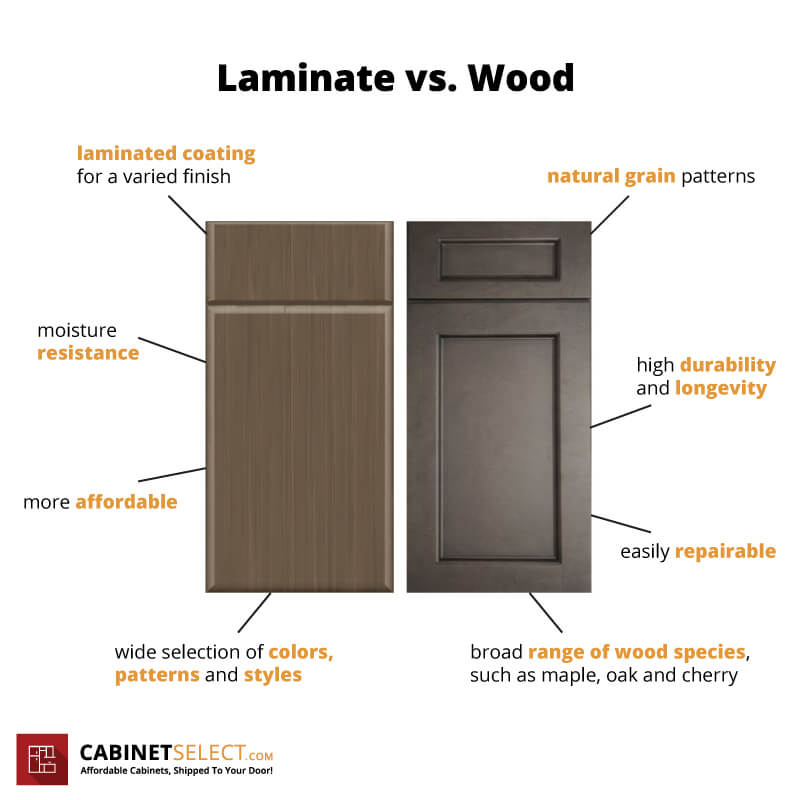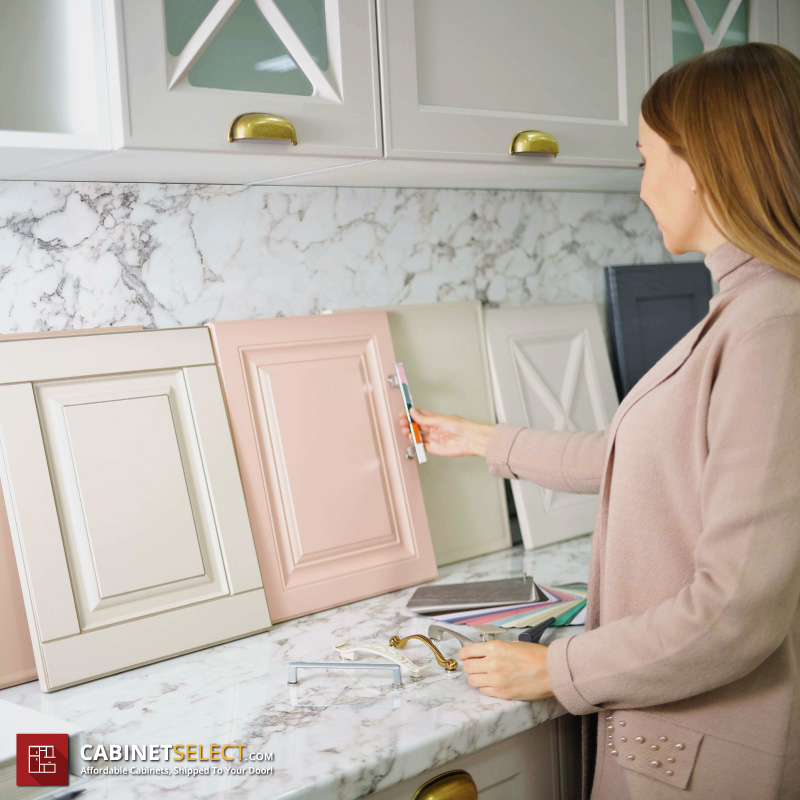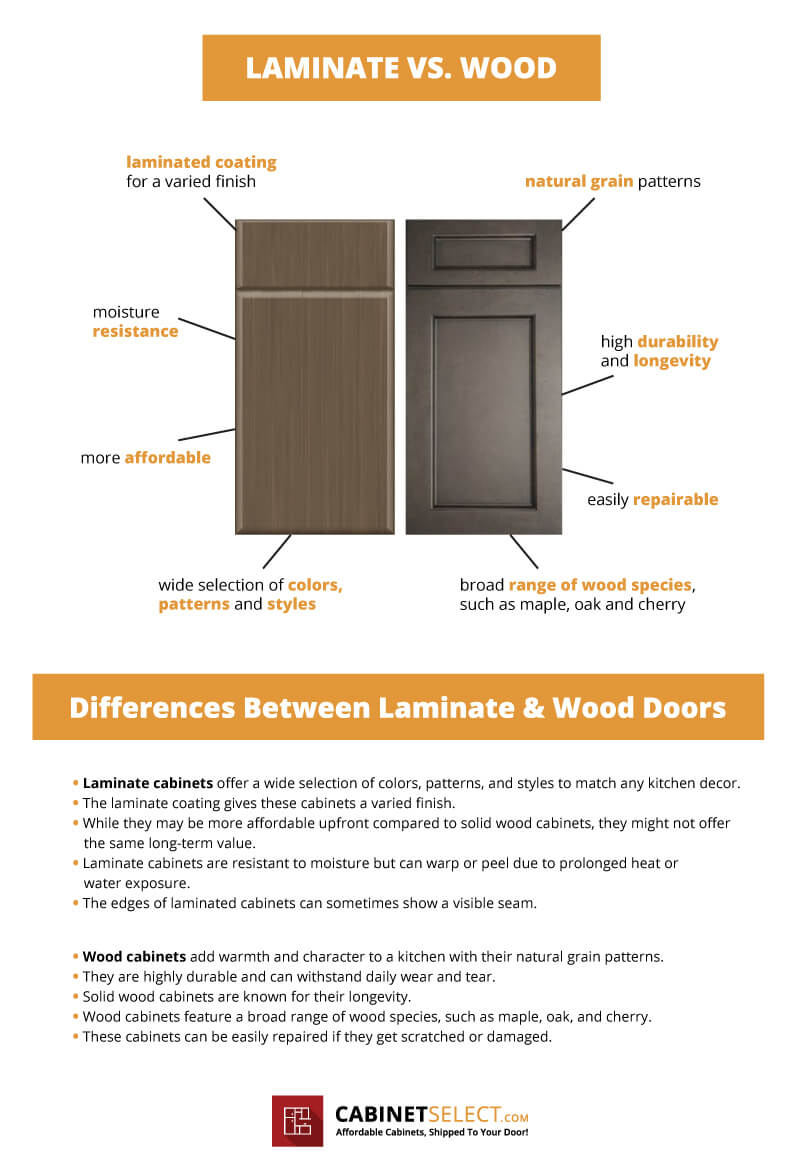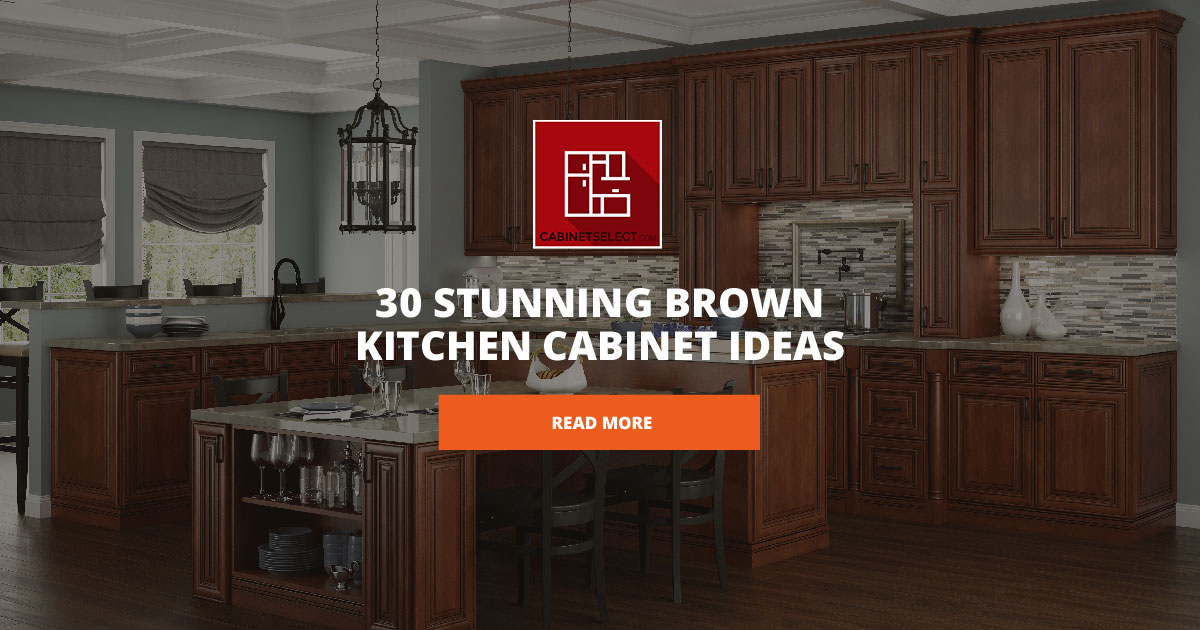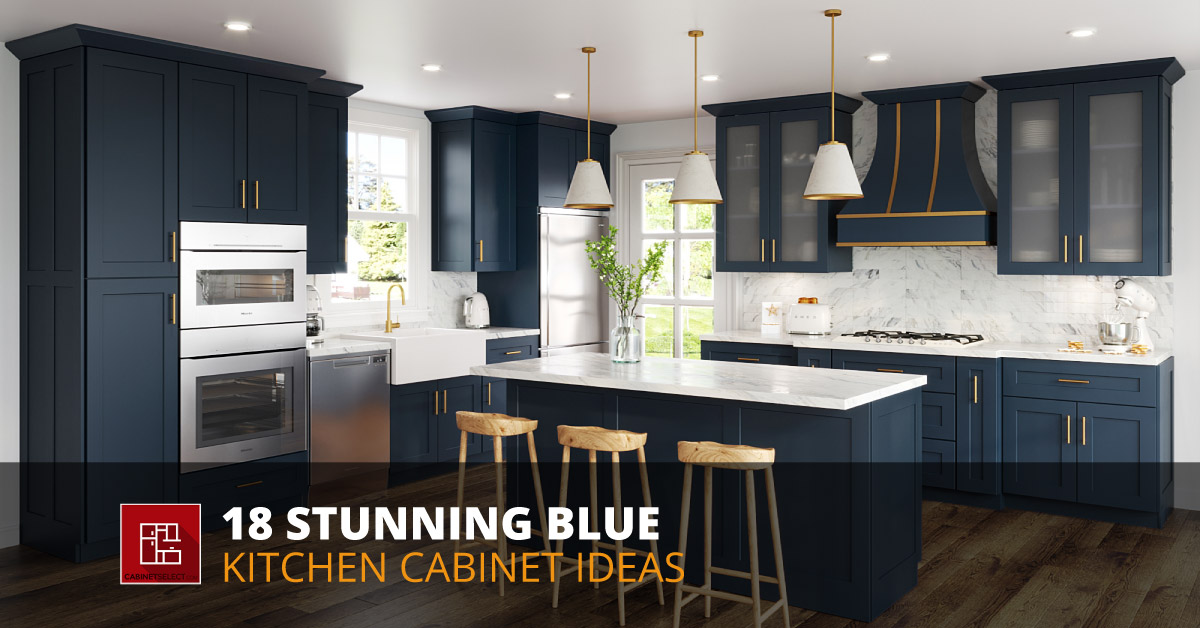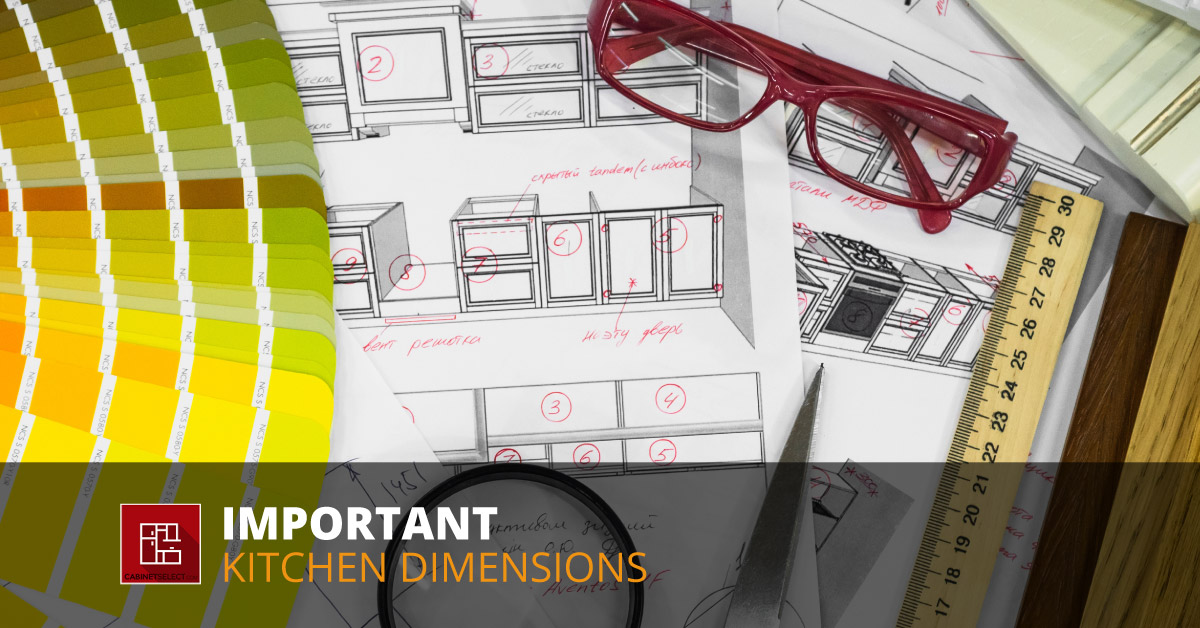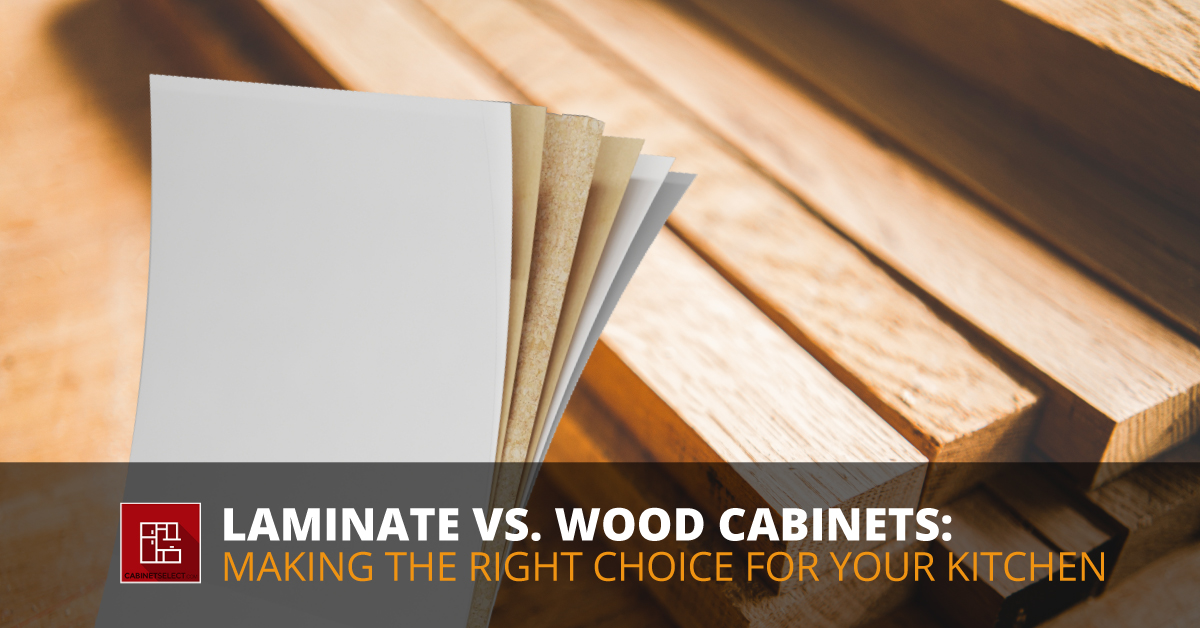
Laminate vs. Wood Cabinets: Making the Right Choice for Your Kitchen
When it comes to kitchen remodeling, one of the most crucial decisions you’ll make is choosing the material for your cabinets. In recent years due to the popularity increase of RTA Cabinets, laminate and wood have emerged as popular options in the world of kitchen cabinetry.
The marketing team at CabinetSelect.com has compiled this guide to offer an in-depth comparison between laminate and wood cabinets. Our goal is to assist you in making an informed decision for your upcoming kitchen renovation project.
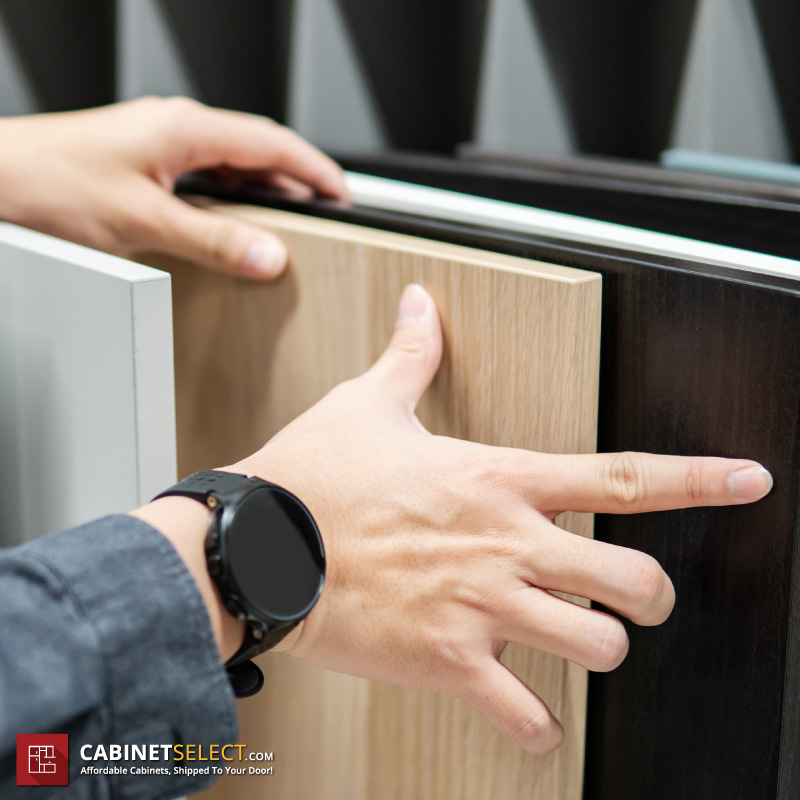
Understanding Laminate Cabinets
Laminate cabinets are constructed with resin-impregnated sheets. They are chosen by many homeowners for their affordability and variety of design options. While laminate cabinets come with moisture-resistant qualities, making them suitable for kitchens, they do have their limitations. The primary concern is their durability when compared to solid wood cabinets. Over time, heat can cause the laminate to peel or warp. Moreover, unlike wood cabinets, laminate cabinets cannot be refinished or sanded down. Different types of laminate coatings provide various finishes and textures, but the edges might show a visible seam, which can be a turn-off for some people.
Key Features and Limitations of Laminate Cabinets
- Laminate cabinets offer a wide selection of colors, patterns, and styles to match any kitchen decor.
- The laminate coating gives these cabinets a varied finish.
- While they may be more affordable upfront compared to solid wood cabinets, they might not offer the same long-term value.
- Laminate cabinets are resistant to moisture but can warp or peel due to prolonged heat or water exposure.
- The edges of laminated cabinets can sometimes show a visible seam.
Diving into Solid Wood Cabinets
Solid wood cabinets are crafted from real wood, providing a timeless and natural look. These cabinets are known for their durability and strength. Solid wood cabinets can be custom-made to fit specific kitchen dimensions, offering a high-end luxury feel to any kitchen space. They can be sanded and refinished multiple times, rejuvenating their appearance.
Highlighting the Strengths of Wood Cabinets
- Wood cabinets add warmth and character to a kitchen with their natural grain patterns.
- They are highly durable and can withstand daily wear and tear.
- Solid wood cabinets are known for their longevity.
- Wood cabinets feature a broad range of wood species, such as maple, oak, and cherry.
- These cabinets can be easily repaired if they get scratched or damaged.
Durability and Maintenance
Durability is a vital factor in cabinet selection. Wood cabinets, with their inherent strength, tend to outlast laminate cabinets. While laminate cabinets may resist moisture and stains initially, they are susceptible to peeling or warping due to heat, making them less durable in the long run. On the flip side, wooden cabinets can be sanded and refinished multiple times, effectively removing signs of wear and tear. Therefore, while wood requires a bit more maintenance, it can offer better long-term durability.
Humidity Considerations
Both laminate and wood cabinets contain wood particles, making them prone to humidity-related issues. Laminate cabinets, in particular, can face challenges in humid conditions. As wood particles expand, the laminate may loosen, which can cause damage. Repairing laminate cabinets post such damage is a challenging endeavor. Wooden cabinets, in contrast, can be restored by professionals who can sand down the surfaces and reapply paint or stain.
Cost and Value
Budget considerations are significant in choosing between laminate and wood cabinets. Laminate cabinets may be more affordable initially, but wooden cabinets can bring added value to your home, making them a potential long-term investment. Wooden cabinets can increase your property’s resale value, making them a justifiable expenditure for many homeowners.
Customization Options
Both laminate and wood cabinets have customization options. Laminate cabinets can mimic the appearance of real wood and present contemporary design choices. However, post-installation, altering laminate cabinets becomes a challenging task without risking damage. Wood cabinets, in comparison, offer ongoing customization. They can be refinished multiple times, allowing for evolving kitchen aesthetics.
Factors Influencing the Choice Between Laminate and Wood:
- Budget can sway the decision.
- The desired aesthetic, rustic or modern, may dictate the material.
- Durability requirements and potential moisture exposure can impact the choice.
- Consideration of maintenance and the property’s future resale value might guide the decision.
How to Determine Which Cabinet Material is Ideal for Your Kitchen?
- Prioritize your budget and features.
- Ensure the cabinets resonate with your kitchen’s overall style and theme.
- Understand the durability each material offers.
- Consider the upkeep each material will require.
- A consultation with a professional designer or contractor can provide clarity.
Both laminate and wood cabinets have their respective advantages and disadvantages. Laminate cabinets are often more appealing to those on a budget and those seeking initial resistance to moisture, whereas wood cabinets provide enduring aesthetics, durability, and the possibility of increasing home value. A thorough assessment of your requirements, combined with the expert advice of the CabinetSelect.com design team, can assist you in improving both the functionality and appearance of your kitchen. Whether you gravitate towards a modern European look using laminate or are captivated by the charm of wood, your selection will play a pivotal role in your kitchen’s transformation.
